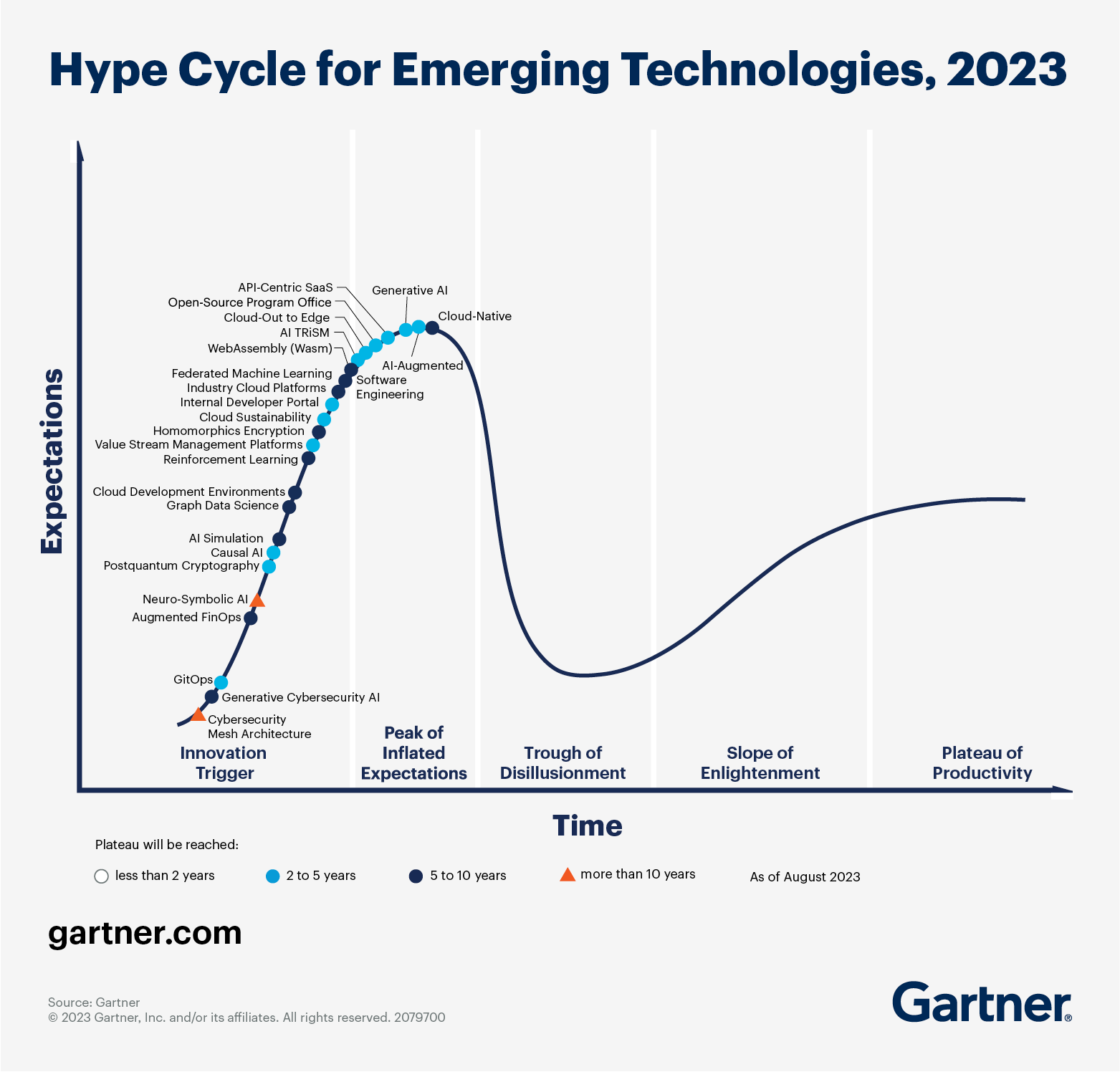2023 has been AI's poster year. Read enough blogs, LinkedIn posts and what we once called "tweets" promoting 27 AI tools you simply must be using and you’ll think it’s changing everything. It's at the "peak of inflated expectations" on Gartner's famous hype cycle.
Will 2024 bear this hype out - or see a reality check?
We’ve worked with AI companies for years so we know how incredible and gamechanging this technology can be. But - we’ve also been here before. Just as with AR, wearable tech and the internet of things, a little dose of reality can be helpful at these hype-ful moments.
So, free thinking contrarians that we are, here's the nuanced view on AI in marketing and the creative industries that you won't hear on LinkedIn. Until we put it on LinkedIn.
“Can I use AI in my marketing?” Well, watch out for the copyright
Many of us in 2023 have had a series of wow moments with generative AI - such as ChatGPT, Midjourney and DALL-E. These are trained on huge datasets of imagery and text available publicly - including, many creators, artists and copyright owners allege, their work, without permission.
It’s not for us to get into who is right and wrong here - there are lawsuits ongoing, for example - but brands ought to start considering how blanket use of these tools reflects their image if creators consider them to be unethical. In book publishing, for example, many publishing houses have come out strongly and publicly against use of these tools, in part to show respect for their authors and illustrators.
There are creative limitations of generative AI
While it’s quite incredible what generative AI can create, it’s also important to know that it is trained on historical data (by definition). This means that the output is skewed by the past. Many of the most interesting generative AI images have been photographic in style, because so much photographic training data is available. Meanwhile AI models can carry the systemic biases of our society because they learn from historical datasets.
Then there’s the practical. AdAge point out based on a CMO survey, “the outputs almost always need to be pruned before being published”; and there's the issue of ChatGPT “hallucinating” - appearing to simply make stuff up.
All in all, it may be that the generative AI models that win out in the medium term are those where the training data is itself more limited and the ownership more secured - like Getty’s - and where the use cases augment and existing creative process (such as what Adobe are building into Creative Suite).
The big problem AI poses for brand marketing
Whether speeding up an existing process or replacing one, generative AI will radically reduce the cost of content generation. You don’t need an economics degree to see that this will lead to a ballooning of the amount of content out there, some of which might find its audience. But much of it will be just more branded stuff.
More branded stuff means it’s harder for your brand to stand out. Let’s be honest, audiences aren’t exactly craving more branded content. If you want something really great and original that stands out, you’re going to need to focus ever more - and brief your agencies and creative teams - on creative strategies and ideas that speak to audiences, build memorability and connect emotionally.
Unexpected use cases of AI
Any groundbreaking new technology will become successful not just for what it was necessarily designed to do, but what people use it for once it's in the wild. There's already loads of ChatGPT use cases, for example - such as using it in strategy development to accrue and parse research data, on top of the current approaches and with an understanding of its dreamy nature.
Testing these tools within parameters, and ensuring marketing teams understand both capabilities and limitations here, will open intriguing new doors and speed up processes - just potentially not the ones you imagine.
AI still excels at analytics and number crunching
While generative AI has caught the eye most this year, it's the crunching of numbers that AI has always, and will continue, to excel at. So analytics, reporting, things like that will probably continue to be where the most exciting developments - I mean exciting in a marketing sense - happen.
Alongside this we’ve already seen generative AI in the form of chatbots becoming a primary technology for customer service. Let’s just steer clear of Grok, shall we - I’m just going to say, I don’t think the world needs a large language model trained on X posts.



